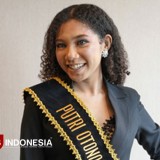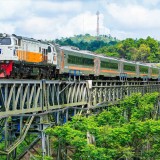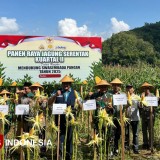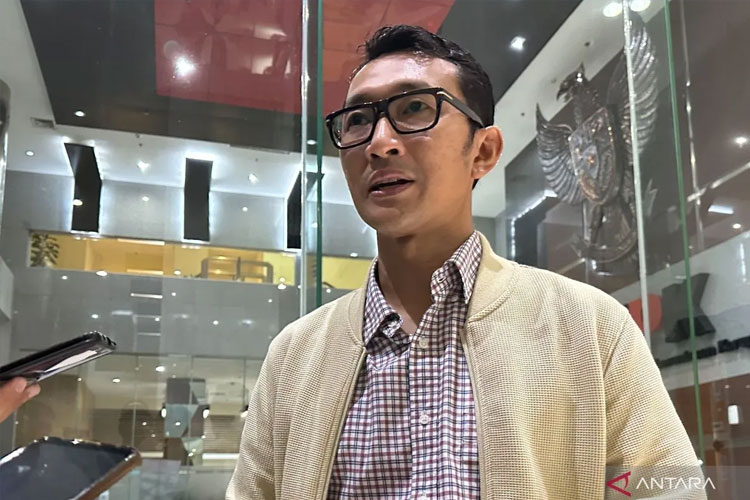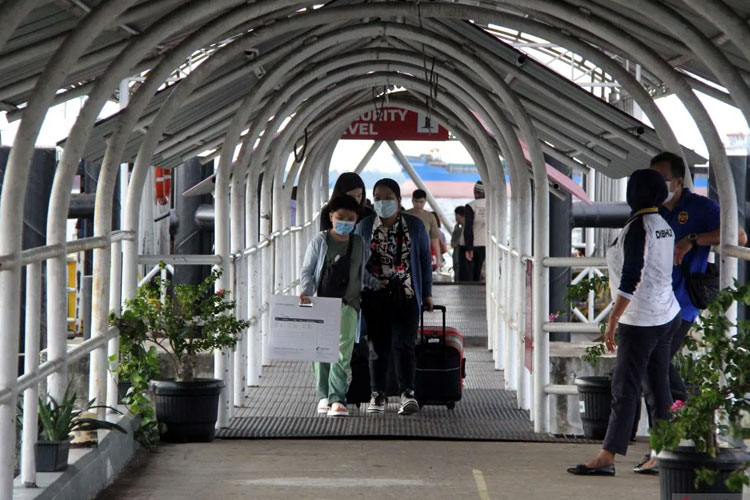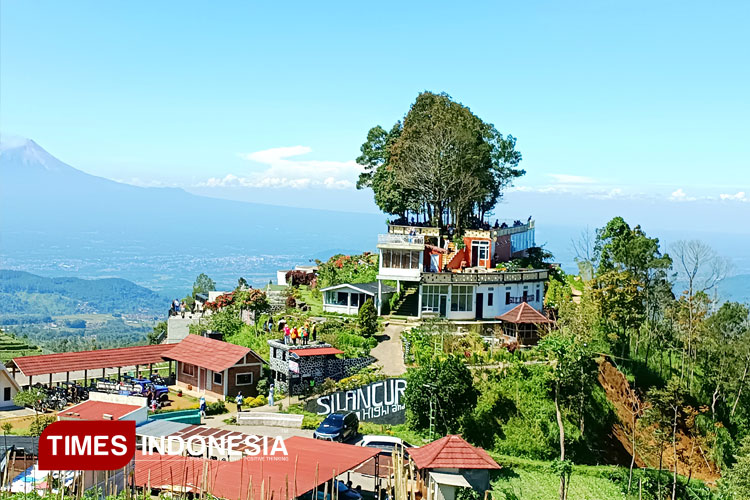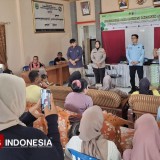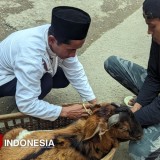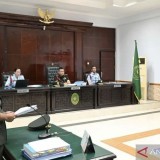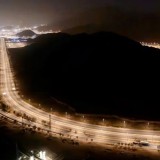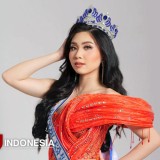TIMES AUSTRALIA, JAKARTA – The relationship between Sheikh Maulana Malik Ibrahim and the Kingdom of Sumedang Larang cannot be drawn in a straight line.
He was one of the Wali Songo, the spreaders of Islam in Java, and had a major role in the spread of Islam in Majapahit and other regions. The Kingdom of Sumedang Larang itself is part of the broader history of Java, with influences from various powers and figures.
There is recognition of the existence of Sheikh Maulana Malik Ibrahim from two former Soviet Union countries, that Azerbaijan recognizes the existence of the first Wali Songo Ulama as part of the history of Islam in Azerbaijan who said that Maulana Malik Ibrahim was indeed a great cleric from the Land of Fire, it is said that Maulana Malik Ibrahim Samarkandi once studied as far as Uzbekistan in the city of Samarkand, then spread Islam to the land of Java until the end of his life.
Meanwhile, Uzbekistan confirmed in a seminar held several years ago that Maulana Malik Ibrahim Samarkandi was a great cleric who came from the city of Samarkand in Uzbekistan and spread Islam to Java in the city of Gresik until he was buried there. He was one of the key figures in the spread of Islam in Java, considered the "Father" of Walisongo. He not only spread Islam to the general public, but also to the Majapahit Royal family.
The Kingdom of Sumedang Larang is a small kingdom in West Java that has its own history and uniqueness. It is not directly part of the Majapahit kingdom, but has a complex relationship with several other kingdoms in Java. The relationship between Maulana Malik Ibrahim and The Kingdom Sumedang Larang is more historical and cultural. Maulana Malik Ibrahim contributed to the spread of Islam in Java, which had an impact on The Kingdom of Sumedang Larang.
Morning approaching noon on a bright Sunday but the air in the city of Sumedang that day was biting the skin, quite hot for Sumedang which is usually cool tending to be cold, slightly affecting the program of a photography competition which was attended by 58 photographers from various cities in West Java and Jabodetabek.
The Kingdom of Sumedang Larang shows its commitment to preserving Sundanese culture by holding an activity entitled "Sumedang Menari 2025". Semut Foto Community as the organizer received permission from the Palace and the event was held as part of an effort to publish and promote Sumedang's traditional arts through photography media on 25 Mey 2025.
There were many young girls dressed like professional dancers, one of whom was Sidqya Putri Firgiawan, a 5th grade student at SDN Padasuka 1 Sumedang who had won the best masked expression dancer in West Java, performing the Mask dance.
I was a guest of honor and enjoyed the cultural activities that had been prepared by the Sumedang Palace, in this case directly under the leadership of the Crown Prince, Radya Anom. If the Governor of West Java has the nickname KDM, the Regent of Purwakarta is usually called uncle Zein, then Radya Anom who will be the successor to the Kingdom of Sumedang Larang has a special nickname, uncle Luky.
Radya Anom, whose full name is Raden Luky Djohari Soemawilaga, was born in Bandung, 54 years ago, has a wife named N.R. Inge Sagitania who comes from the Mangkunegaran Palace family, and has a daughter named Selsa Shifa Soemawilaga. Radya Anom is the great-grandson of Prince Aria Soeria Koesoemah Adinata/Prince Sugih from his father's line Raden Lukman Hamid Soemawilaga, while from his mother's line, Radya Anom who was educated in Bandung, from elementary school to college, has a grandfather named Raden Tumenggung Djoewarsa.
As the successor to the Kingdom, although now he is more enthroned as a symbol of the last Sundanese Kingdom in West Java, Radya Anom seems to really enjoy his role as a nobleman who is obliged to preserve the customs and culture of the Sumedang Larang Kingdom in particular and the Sunda Kingdom as a whole. The Pajajaran Kingdom or commonly known as the Sunda Kingdom was a Hindu kingdom built by Maharaja Tarusbawa.
Radya Anom is fluently in explaining the history of the Sunda Kingdom, especially the Binokasih Crown as a symbol of the unity of the Sundanese royal family, which stretches from the Galuh Kingdom in Ciamis which was founded by King Wretikandayun in 612 AD, then the Pakuan Kingdom in Bogor which is often called the Pajajaran Kingdom which is a Hindu kingdom founded by Sri Jayabhupati in 923 AD and The Sumedang Larang Kingdom.
This kingdom is also known as the Land of Sunda, Pasundan, or Pakuan Pajajaran. There were several Kings and Queens who once ruled the Pakuan Kingdom, one of which was Sri Baduga Maharaja (Prabu Siliwangi), he reigned in Pakuan in 1482-1521 AD.
Then who was the founder of the Kingdom of Sumedang Larang which became the last Hindu kingdom in West Java. The name Prabu Aji Putih or better known as Prabu Guru Haji Putih was mentioned.
He founded this kingdom in the Tembong Agung area, which was later known as the Sumedang Larang Kingdom. Prabu Aji Putih was the first king of the Tembong Agung Kingdom. In addition to Prabu Aji Putih, Prabu Tajimalela is also known as an important figure in the history of the Sumedang Larang Kingdom.
He was the son of Prabu Aji Putih and continued the throne established by his father. Prabu Tajimalela is also often referred to as the founder of the Sumedang Larang Kingdom, because he was the one who later developed and confirmed the identity of the kingdom.
The Kingdom of Sumedang Larang Kingdom was one of the small kingdoms in the western part of Java Island that was established after the dissolution of the Demak Sultanate in the 16th century AD.
The popularity of this kingdom was not as prominent as the Demak, Mataram, Cirebon, Banten kingdoms in the historical literature of Islamic kingdoms in Indonesia.
However, the existence of this kingdom provides historical evidence of its very strong influence among the Sundanese people in the process of spreading Islam, as was first done by the Demak Sultanate, then the Cirebon Sultanate and the Banten Sultanate.
The process of Islamization carried out by the Demak Sultanate was successful so that the Sumedang people who previously adhered to the Sunda Wiwitan belief system gradually believed in Islam.
This kingdom was founded in 721 AD by Prabu Tajimalela, a descendant of King Wretikandayun of the Galuh Kingdom, in the former territory of the Tembong Agung Kingdom. The Sumedang Larang Kingdom was once known as the Himbar Buana Kingdom, and once had the status of being part of the Sunda and Galuh Kingdoms between the 8th and 16th centuries AD, where its rulers were under the rulers of the two kingdoms.
The capital of Sumedang Larang was once in Citembong Girang, which is currently included in the Cikeusi village area, Darmaraja District, Sumedang Regency.
Islam began to develop in Sumedang Larang during the reign of Prince Santri (1530-1578 AD), and Sumedang Larang joined the Cirebon Sultanate.
In 1578 AD, his son named Prince Angkawijaya received the Pajajaran heirloom and was crowned King of Sumedang Larang with the title Prabu Geusan Ulun, where this heirloom gift signified Sumedang Larang as the legitimate successor to the Sunda Kingdom lineage. In the Babad Sumedang, Sumedang Larang region is bordered by the Java Sea to the north, the Cipamugas River to the west, the Indian Ocean to the south, and the Cipamali River to the east.
However, the Sunda Kingdom itself collapsed in 1579 AD after Pulasari was conquered by Maulana Yusuf from Banten (Burak Pajajaran).
The collapse of the Sunda Kingdom resulted in its former territory being divided between Banten Sultanate in the West and Cirebon Sultanate in the East. In 1585, Sumedang Larang kingdom under the leadership of Prabu Geusan Ulun declared itself a sovereign state and separated from Cirebon, but this only lasted for 35 years, due to the weak condition of the kingdom, squeezed between three great powers (Banten, Cirebon, and the Mataram Sultanate) and in 1620 AD decided to join Mataram, where the kingdom's status was reduced to a Regency under Mataram.
Binokasih Syangyang Pake becomes A Resources of Sundancial Civilization
Binokasih Syangyang Pake is the name of the Sundanese royal crown stored in the Prabu Geusan Ulun Museum - Kingdom Sumedang Larang. This crown, which is considered sacred, was made during Galuh kingdom by Prabu Bunisora in 1371 AD and was first worn by Prabu Niskala Wastu Kencana, the King of Galuh who replaced Prabu Bunisora.
This crown was then passed on to the succession of the Galuh Kings. When Prabu Jaya Dewata/Prabu Sri Baduga Maharaja ruled as King of the Galuh kingdom and also the Sunda kingdom, he united the two kingdoms into the Sunda kingdom and its capital was moved from Kawali Galuh in Ciamis to Pakuan Pajajaran in Bogor, This royal crown was passed on to the Sunda Pajajaran kingdom, and finally when the Sunda Pajajaran kingdom was led by the last king, Prabu Seda Mulya Surya Kancana, decided to end the power of Pajajaran and declared Pajajaran Burak (no longer had power).
Prabu Seda Mulya Surya Kancana ordered Senopati Pajajaran to hand over the Binokasih Crown from Pajajaran to the Kingdom of Sumedang Larang. The handover of the Binokasih Crown to Sumedang Larang fell on April 22, 1578 AD. (Primary source of the Waruga Jagat Manuscript)
The important event in the journey of the Binokasih Crown made Sumedang Larang kingdom legally as the successor to the Sunda kingdom (Pajajaran) or as the last Sundanese kingdom with the authentic evidence of the existence of a pair of Binokasih Crowns as a symbol of the highest legitimacy of the Sunda kingdom which is now stored well and safely in the Sumedang Larang Palace’s museum.
The existence of the Binokasih Syangyang Pake Crown has the potential for sublime cultural power and has a meaning contained in the crown, namely there is a local wisdom value that needs to be maintained at all times, both historically and as a value that contains the ideological philosophy of a government system.
From the historical value contains, that Binokasih Crown is the basis of strength that gave birth to innovative regional policies, namely by establishing Sumedang as the Center of Sundanese Culture which was declared in West Java Province back in 2009 and gave birth to the Reconstruction and Revitalization program of the Sumedang Larang Palace as a Cultural Center that functions as a center for the development and preservation of culture in the region.
Meanwhile, from the philosophical ideological value, it was found that the naming of the Binokasih Syangyang Pake Crown means fostering Compassion and the meaning of Syangyang Pake is that the value of Compassion must continue to be used as the highest value in life; both in daily life, social life of society and life of the nation, state and world life in general.
Compassion as the highest value in life when studied more deeply, is a Resource that gives birth to a system of noble value order as a civilization, including the values of mutual cooperation, tolerance, deliberation and consensus, justice, wisdom, and so on.
The Value of Compassion gives birth to the concept of thought and the system of ideas of Kasundaan Tilu Tangtu/Tri Tangtu Buana, namely Resi, Rama and Ratu. Resi or the creator gives birth to the Value of mutual affection, Rama of father gives birth to the Value of sharpening, while Ratu or mother gives birth to the Value of mutual care.
At the end of Sunda Pakuan (Pajajaran) kingdom, the decree had fallen and the Sumedang Larang Palace accepted Binokasih Crown from Sunda Pakuan kingdom with a feeling of proud and full of responsibility for the decision or in Sundanese well said ngarasa reueus tur pinuhtanggungjawab kana kaisar. (*)
| Writer | : Nia S. Amira |
| Editor | : Wahyu Nurdiyanto |



